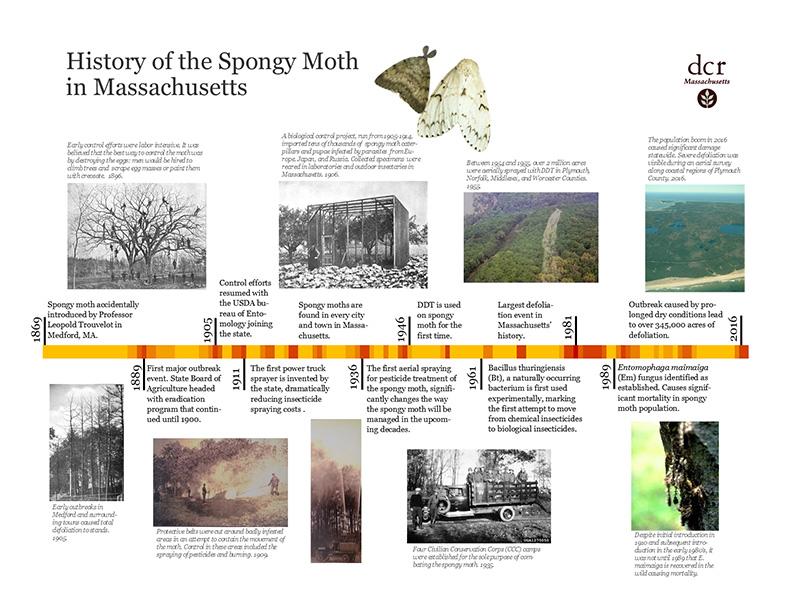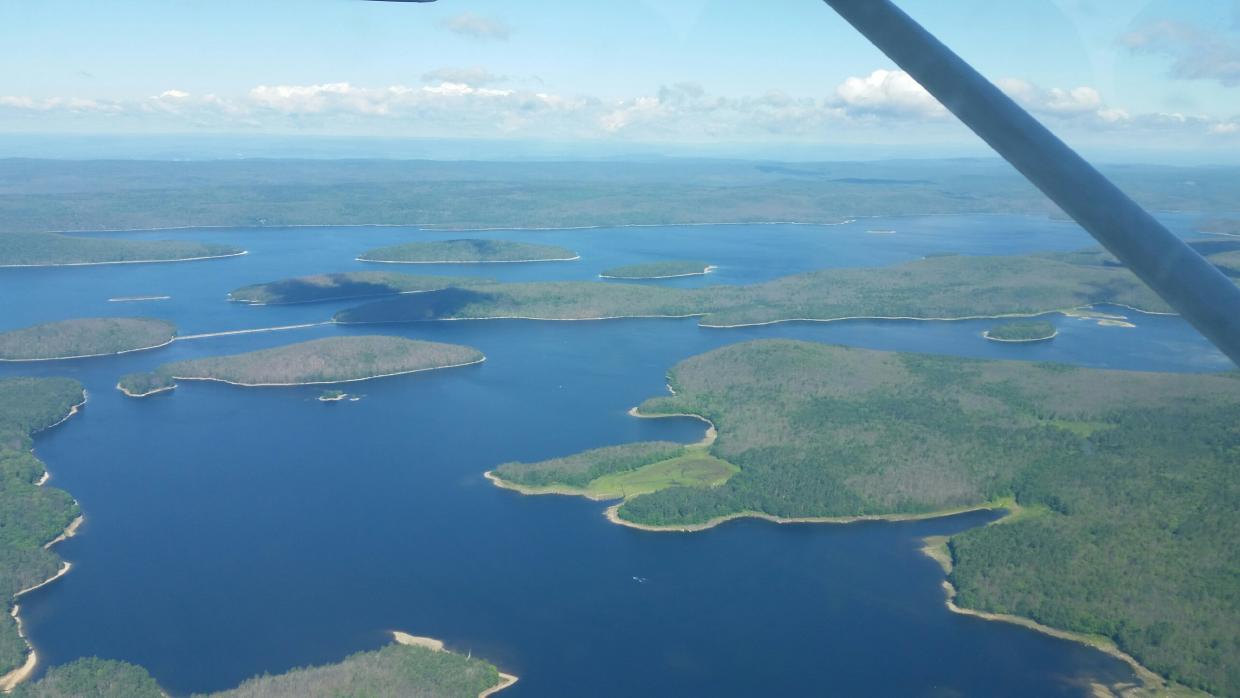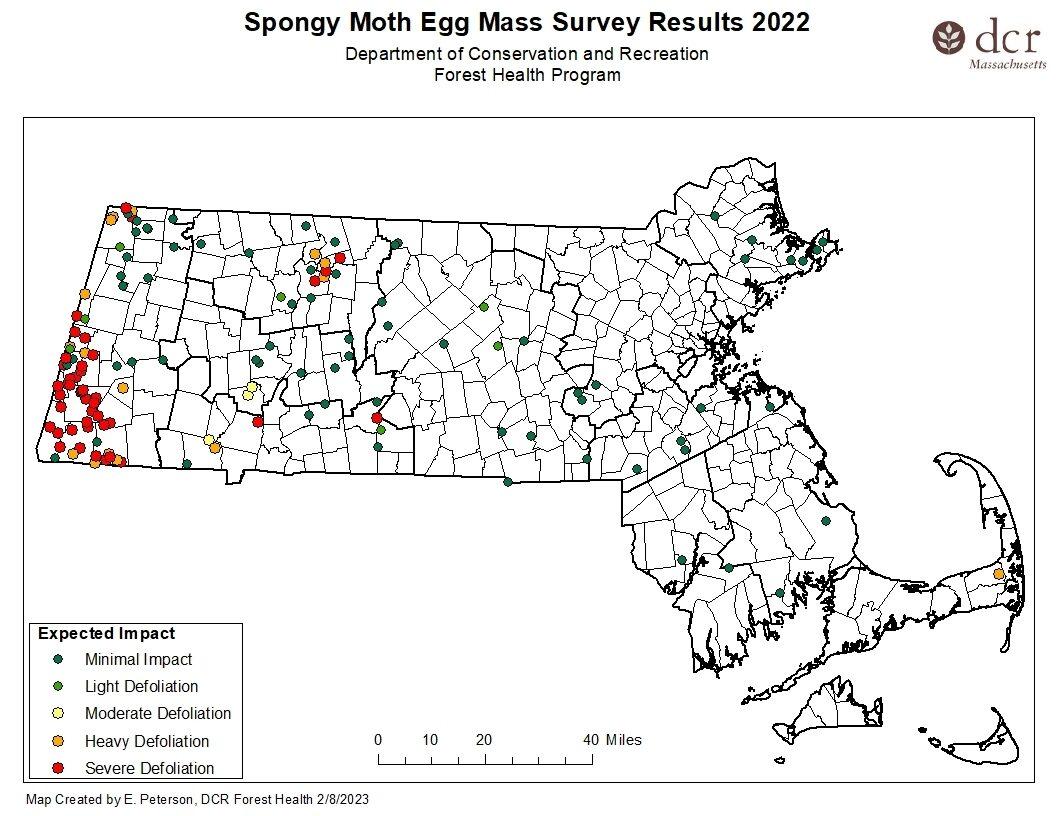Due to the strong influence of natural conditions and controls, it is difficult to predict impact on a local level. Using the previous year’s aerial defoliation survey and fall egg mass counts, we can somewhat predict future defoliation within counties. It is important to know that spongy moth population size, distribution, and feeding patterns can be highly localized and vary widely even within a town or city.
Tree owners concerned about impact on their trees can do a few things to determine if spongy moth will be feeding in their area. The first step is to compare this year with last:
- Were there any caterpillars present?
- Was the defoliation severe?
- Did you notice dead caterpillars hanging from the trees?
- Were there adult moths present in late July?
If there was a large population last year with little caterpillar mortality and high adult survival, it is likely spongy moth will be present again. Additionally, trees that lost a lot of leaves last year are more stressed and susceptible to even more damage. Tree owners can also look for new, healthy egg masses. The egg masses are tan in color and about an inch and a half long. Egg masses will most likely be found in trees but can be found on the sides of buildings, outdoor furniture, or even large rocks. If you are seeing multiple egg masses on a tree, it is likely you will have a large caterpillar population in the spring.
There are some actions tree owners can take on their own to help reduce the impact. Any visible egg masses can be removed in the winter and early spring- just gently scrape the egg masses off into soapy water. There will be egg masses you are unable to reach or even see, so there will still be moths present but this can help decrease the number of caterpillars. Tree owners can also place sticky barrier bands around the tree trunk to reduce the number of caterpillars crawling upward into the tree canopy. Caterpillars can still balloon onto trees and some will make it past the bands, but when used correctly and care is taken to avoid tree damage, they can decrease the number caterpillars accessing the foliage. When using barrier bands, only use products safe for tree use. Several companies sell pre-made bands or the sticky materials specific for insect use, grease and petroleum-based products can be damaging to the tree and should be avoided. Bands should be placed before caterpillar hatch (usually late April) and make sure to remove bands after moths being pupation (usually late June/early July) to avoid any unnecessary damage to the tree.
Tree owners may consider treatment options to reduce the impact to their trees. Deciduous trees, such as the oaks, are preferred by the spongy moth. In most cases the trees are able to survive three consecutive years of severe defoliation. Additional stressors, like drought, can cause tree decline or die before the third year. When considering treatment, tree owners should determine if the tree will see additional feeding and if there are other concerns that could affect the tree. The tree owner should also weigh the cost of treatment against their value of the tree (economic, ecological, aesthetic etc).
The recommended treatment for spongy moth is the biological pesticide Bacillus thurigiensis kurstaki (BTK) applied directly to the leaves soon after caterpillar emergence (usually late April/early May). BTK is not as effective in the large, late instar caterpillars and treatments should be done before there is noticeable feeding/defoliation. For larger trees, we recommend hiring a certified arborist that is a licensed pesticide applicator to ensure applications are done correctly and the entire tree foliage is covered.


